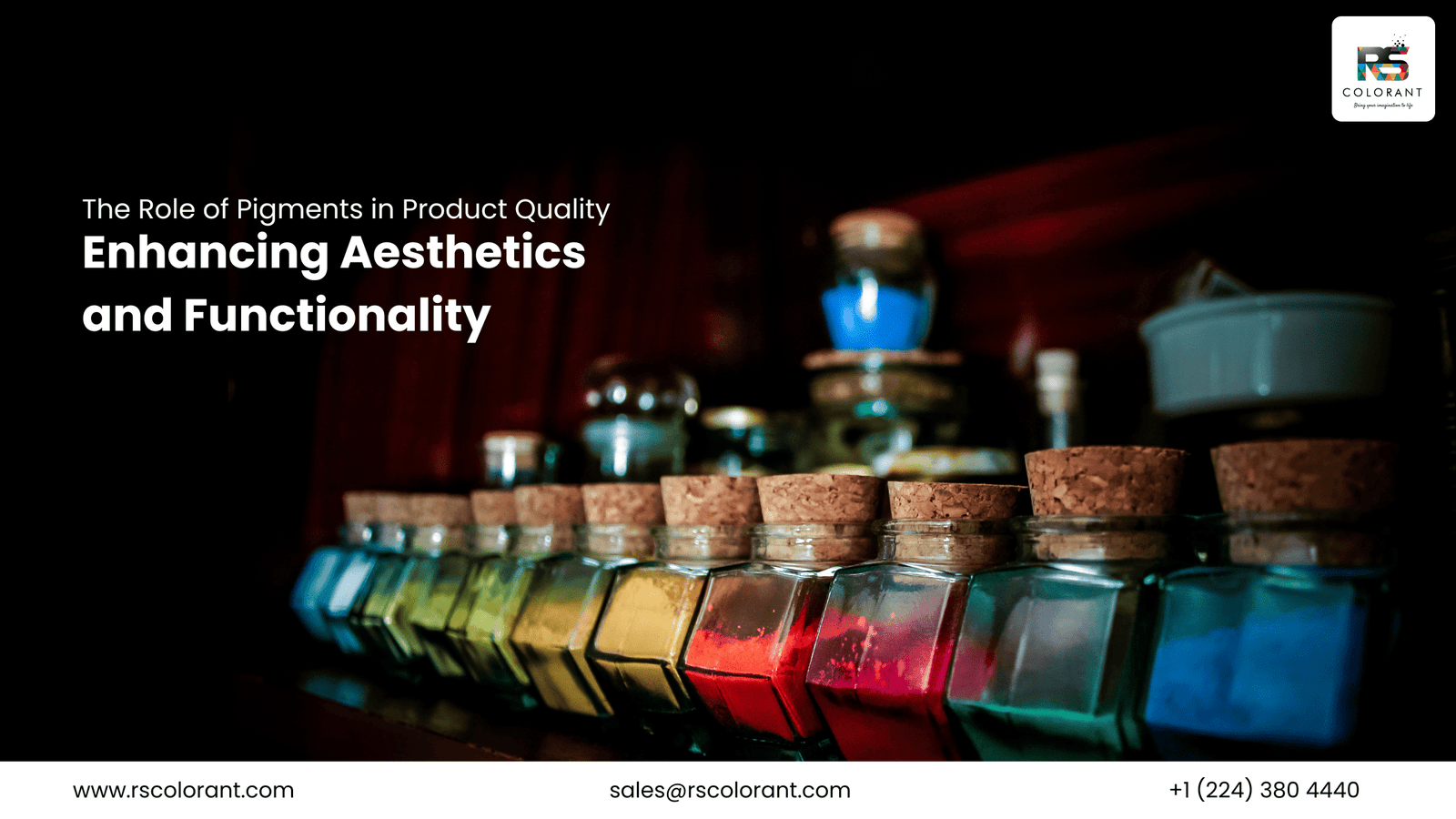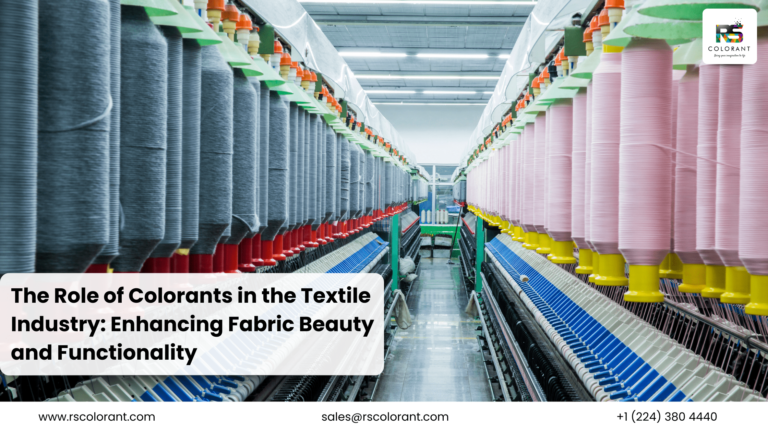Pigments in Product Quality
In the dynamic world of manufacturing and product development, pigments play a crucial role that extends far beyond mere aesthetics. These colorants, which can be derived from natural or synthetic sources, are integral to ensuring product quality across various industries. From the vibrant hues of plastics and coatings to the nuanced shades in textiles and cosmetics, pigments influence both the visual appeal and functional properties of products. In this comprehensive article, we delve into the significance of pigments in product quality, examining their applications, benefits, and the latest industry trends.
Understanding Pigments
What Are Pigments?
Pigments are substances that impart color to materials. They are typically insoluble particles that, when added to a substrate, provide color through selective absorption and reflection of light. Pigments can be categorized into two main types:
Organic Pigments: These are carbon-based molecules, often derived from natural sources such as plants and animals, or synthesized chemically. They are known for their bright and vivid colors.
Inorganic Pigments: Composed of mineral compounds, these pigments are renowned for their durability, opacity, and stability. Common inorganic pigments include titanium dioxide, iron oxides, and chromium oxides.
Pigments vs. Dyes
While pigments and dyes both serve to color materials, they differ significantly in their properties and applications. Dyes are typically soluble in their application medium, forming a solution, while pigments are insoluble and must be dispersed in a binder to create a suspension. This distinction impacts their use in various industries, with pigments often favored for their superior lightfastness, opacity, and resistance to chemical and physical degradation.
The Impact of Pigments on Product Quality
Enhancing Aesthetics
One of the most apparent roles of pigments is enhancing the visual appeal of products. In consumer-driven markets, the appearance of a product can significantly influence purchasing decisions. Bright, consistent, and appealing colors can make a product stand out on the shelf and convey a sense of quality and desirability. For instance:
Cosmetics: Pigments are essential in creating the vast array of shades in lipsticks, eyeshadows, and foundations. The right pigment blend can produce colors that appeal to diverse consumer preferences and skin tones.
Textiles: Fashion trends rely heavily on pigments to provide vibrant and long-lasting colors to fabrics. The ability to produce consistent and fade-resistant colors is crucial for maintaining brand reputation and customer satisfaction.
Plastics and Coatings: In automotive, packaging, and home goods industries, pigments help in achieving attractive and uniform colors that enhance the overall product appeal.
Functional Properties
Beyond aesthetics, pigments contribute significantly to the functional properties of products. These include:
UV Protection: Certain pigments, such as titanium dioxide and zinc oxide, offer excellent UV protection. This is particularly important in products like sunscreens, outdoor furniture, and automotive coatings, where exposure to sunlight can cause degradation.
Heat Stability: In applications such as plastics and paints, pigments must withstand high processing temperatures without degrading. Inorganic pigments are often preferred for their thermal stability.
Chemical Resistance: Pigments can improve a product’s resistance to chemicals, ensuring longevity and durability in harsh environments. This is crucial for industrial coatings and protective finishes.
Performance in Application
The performance of pigments during application processes also affects product quality. Key considerations include:
Dispersion: The ability of pigments to disperse uniformly in a medium is critical. Poor dispersion can lead to color inconsistency and defects in the final product. Advanced milling and dispersion techniques are employed to achieve optimal results.
Compatibility: Pigments must be compatible with the binders, solvents, and other additives used in the formulation. Incompatibility can lead to issues such as flocculation, poor adhesion, and color shifts.
Stability: Pigments must maintain their color integrity and stability under various conditions, including exposure to light, heat, and chemicals. This ensures that the product retains its intended appearance and functionality over time.
Industry-Specific Applications and Innovations
Automotive Industry
In the automotive industry, pigments are critical in achieving the desired aesthetic and functional qualities of vehicles. Metallic and pearlescent pigments, for example, create eye-catching finishes that enhance the visual appeal of cars. Additionally, pigments with high heat stability and chemical resistance ensure that automotive coatings can withstand extreme conditions and maintain their integrity over time.
Recent innovations in this sector include the development of smart pigments that can change color based on environmental conditions, offering unique customization options for consumers.
Textile Industry
The textile industry relies heavily on pigments to produce vibrant and durable colors. Advances in pigment technology have led to the creation of eco-friendly pigments that reduce the environmental impact of textile production. These pigments are designed to require less water and energy during the dyeing process, aligning with the industry’s shift towards sustainable practices.
Nanotechnology is also playing a role in enhancing pigment performance in textiles. Nano-sized pigments offer improved colorfastness and durability, ensuring that fabrics retain their color and appearance even after repeated washing and exposure to sunlight.
Plastics Industry
In the plastics industry, pigments are essential for both aesthetic and functional purposes. They are used to color a wide range of plastic products, from consumer goods to industrial components. Pigments with high thermal stability and resistance to chemical degradation are particularly important in applications such as automotive parts, electrical components, and packaging.
The introduction of biodegradable pigments has been a significant innovation in this industry, addressing the growing demand for environmentally friendly products. These pigments break down more readily in the environment, reducing the impact of plastic waste.
Cosmetics Industry
The cosmetics industry is perhaps one of the most pigment-dependent sectors. The right pigments can make or break a product’s success, as consumers seek high-quality, long-lasting, and safe color cosmetics. Advances in pigment technology have led to the development of pigments that offer superior coverage, longevity, and skin compatibility.
Clean beauty trends have spurred the demand for natural and non-toxic pigments. As a result, the industry is exploring alternative sources of pigments, such as plant-based and mineral-based options, to meet consumer preferences for safe and sustainable products.
The Future of Pigments in Product Quality
As industries continue to evolve, so too does the role of pigments in ensuring product quality. Emerging trends and innovations are shaping the future of pigment applications:
Sustainable Pigments
The push for sustainability is driving the development of eco-friendly pigments. Manufacturers are increasingly focusing on reducing the environmental impact of pigments by developing alternatives that are biodegradable, non-toxic, and derived from renewable sources. This shift is particularly relevant in industries such as textiles, plastics, and cosmetics, where sustainability is becoming a key factor in consumer decision-making.
Smart Pigments
Smart pigments, which can change color in response to environmental stimuli such as temperature, light, and pH, are opening new possibilities for product innovation. These pigments are being explored in applications ranging from fashion and interior design to automotive and packaging. For example, thermochromic pigments that change color with temperature variations can be used in packaging to indicate the freshness of food products.
Nanotechnology
Nanotechnology is revolutionizing pigment performance by enabling the production of pigments with enhanced properties. Nano-sized pigments offer improved dispersion, higher color intensity, and greater stability. They also provide unique functionalities, such as antimicrobial properties and enhanced UV protection, which are valuable in industries such as healthcare, textiles, and coatings.
Digital Color Matching
Advances in digital technology are transforming the way pigments are used in product design and manufacturing. Digital color matching systems enable precise color formulation and replication, ensuring consistent quality across different production batches. This technology is particularly beneficial in industries such as automotive, textiles, and coatings, where color consistency is critical.
Conclusion
The role of pigments in product quality is multifaceted and extends beyond mere coloration. Pigments enhance the aesthetic appeal, functional properties, and overall performance of products across various industries. As technological advancements and sustainability concerns continue to drive innovation, the future of pigments holds exciting possibilities for further improving product quality and meeting evolving consumer demands.
For companies like RS Colorant, staying at the forefront of pigment technology is essential to delivering high-quality, innovative solutions that meet the needs of diverse industries. By embracing new developments and focusing on sustainable practices, RS Colorant can continue to play a pivotal role in shaping the future of pigments in product quality.




